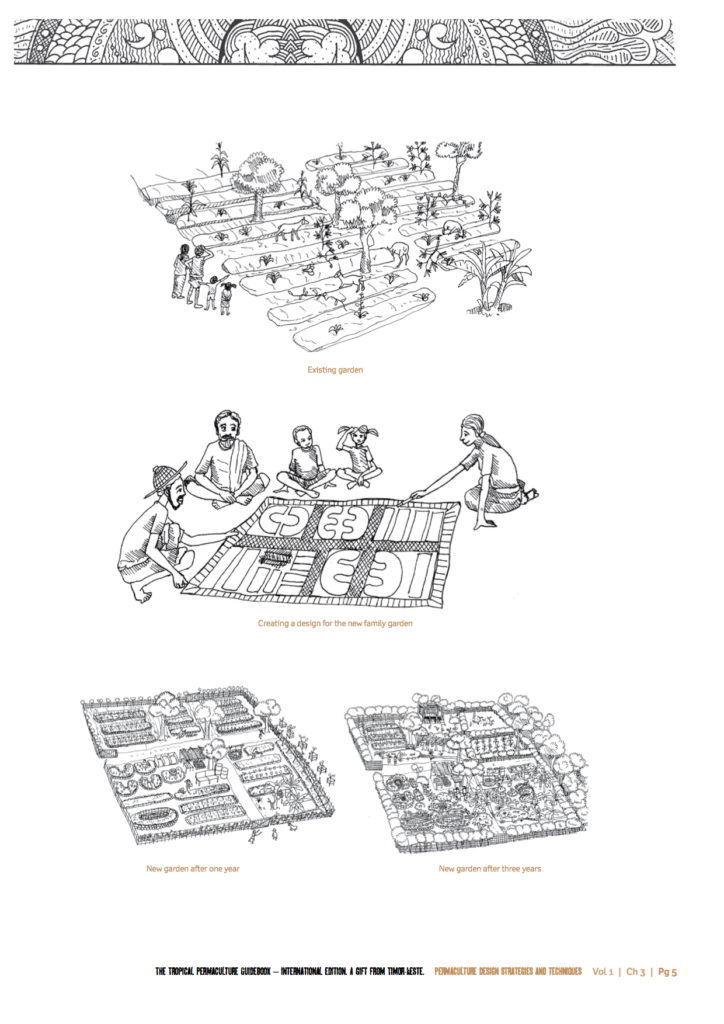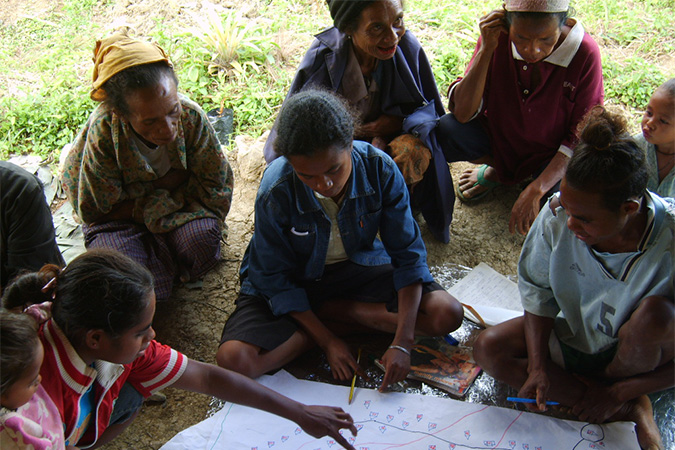Permaculture design
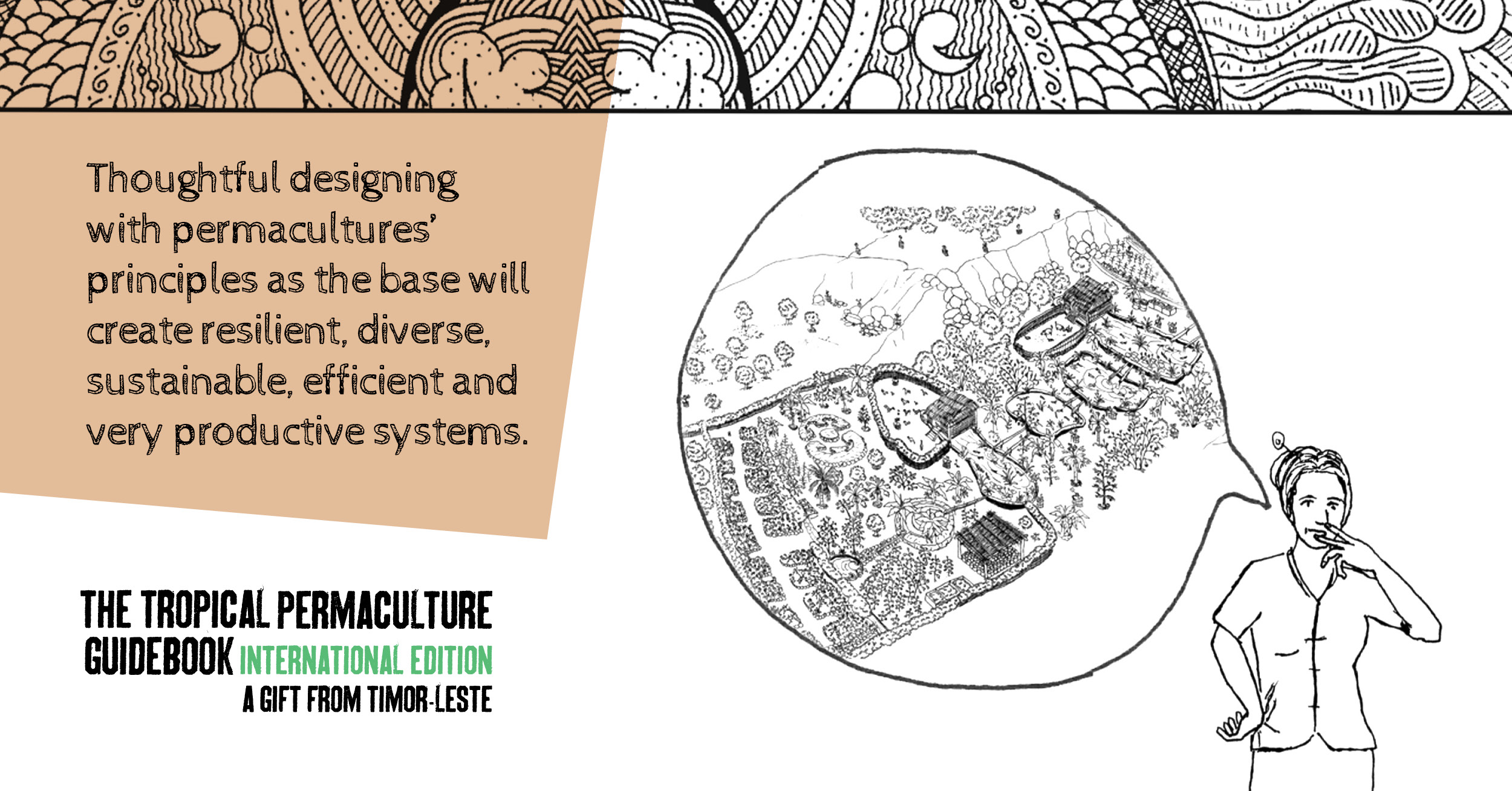
Permaculture design looks at ideas and methods for creating long-term, sustainable, self- maintaining systems for agricultural land, animal systems, houses, projects and communities.
We look at the elements:
An element is one of the fundamental components making up the whole or the different parts it contains.
Then we ask the questions:
“Where does this element go?”
“How can it be placed for maximum benefit in the system?”
Permaculture combines techniques and strategies.
Techniques are how to do things.
Strategies are how and when to do things.
Design is about making a pattern with the elements; working with the land to create a system.
The design process creates a plan for the whole area; from the overall picture down to the fine details.
To create a design that will succeed, it is vital to use the concepts from Natural patterns (Ch 2) as a guide during the design process. Permaculture is based on understanding and using this information, about copying natural ecosystems and working with the land’s patterns to create stronger, healthier and more sustainable designs.
A permaculture design is a complete long-term plan for a site, whether it is a large or a small farm, a family home, a community or a business. However, the design is implemented in stages – step by step. It is important to begin with the right steps.
In permaculture you design the space and you design the time frame.
Why? Outcomes of good design
A good permaculture design:
- Creates a plan for now and the future.
- Accounts for all lifestyle aspects in the design.
- Reduces mistakes that need to be corrected later.
- Shows what the priorities are for establishing a successful farm or project.
- Enables you to see how to integrate parts of the system to save resources and labour, and increase production.
- Reduces the amount of work needed in the long term and helps you to gain maximum benefit for your work.
- Accelerates the growth of a farm or project because the right technique is used at the right time: e.g. creating your water catchment system and access ways first, planting fast-growing legume “mother trees” with fruit trees.
CLIMATE RESILIENCE
- Plan for extremes in the weather and climate − this is very important. If your farm can cope with droughts, floods and storms, and still produces, your family and community will continue to have food and income. There are many techniques in the guidebook to improve your ability to cope with droughts, floods and storms.
- Climate resilience also requires community responses. Urban and community permaculture (Ch 4) looks at community design and how people can work together to improve food, water and livelihood security, as well as reducing the negative impacts of climate change.
The following benefits of good design are also important to create resilience to climate change and uncertain weather patterns.
ENERGY EFFICIENCY
- Plan how to use waste from one section as a resource in another section, so all the elements are linked and all waste is reused.
- Houses and dwellings should be built or refitted to maximise energy efficiency and minimise energy use.
- Energy comes from renewable sources.
- Human labour is minimised through system integration.
FOOD AND WATER SECURITY
- Ensure there is a diversity of food and crops with emergency food supplies set aside.
- Have a diversity of crops so there are always some that grow well, with more focus on tree
crops. - Give crops the maximum opportunity to yield well through good land use and management,
including producing continual resources for organic fertilisers and crop management needs. - Reduce and prevent soil loss and other types of erosion.
- Catch and store rainwater.
- Store and spread rain on the land to allow maximum usage and the minimum of problems.
- Protecting and restoring springs, rivers and other natural water sources.
- Use water bodies in your design, including for cleaning and reusing dirty water.
ENVIRONMENTAL PROTECTION AND RESTORATION
Good design considers the natural environment as part of your overall design. Environment protection and restoration have many benefits, especially when considering climate change:
• Secure water sources.
• Less wind damage to crops.
• Higher pollination rates.
• Reduced erosion, landslides and potential storm damage.
A design, like a good framework to help you build a strong, long-lasting house, gives you order but with flexibility. Designs can change as circumstances change: As you have successes or make mistakes on your farm you can adjust the design accordingly.
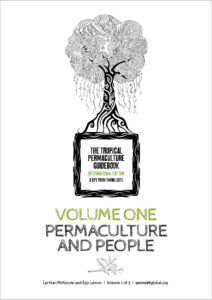
Permaculture Design Strategies and Techniques (Chapter 3) looks at many aspects of design, and the information here is the base for all of the chapters that follow.
Different design approaches included in this chapter are needs and products analysis, site analysis, zones and data collection as well as in-depth information about key techniques such as water and wind management, micro-climates, multifunctional approaches, and designing with time.
Contents include:
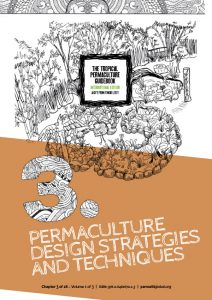
- Permaculture design
- Design techniques
- Analysis of elements
- Zones
- Observation and data collection
- Design techniques
- Designing steps and stages

